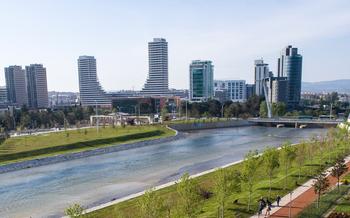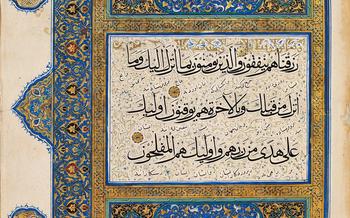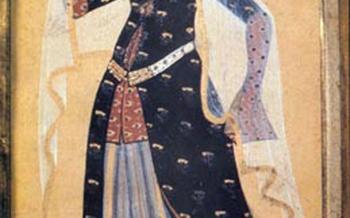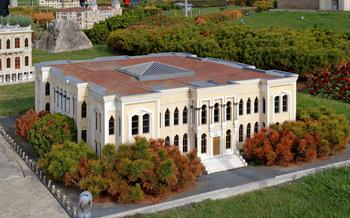
Bursa Postal History Museum
- Bursa Postal History Museum: A Treasure Trove of Communication History
- Early Postal Systems: A Journey Through Time
- Ottoman Postal System: Connecting Empires
- First Turkish Stamps: Unveiling National Identity
- Postal Uniforms: A Reflection of Professionalism
- Telegraphy and Modernization: Embracing Technological Advancements
- Philately Corner: A Haven for Stamp Enthusiasts
- Timeline of Postal Developments: A Visual Journey
- Transportation Evolution: From Horses to Planes
- Hands-On Activities: Engaging Visitors of All Ages
- Temporary Exhibitions: Exploring Diverse Themes
- Research Center: A Hub for Scholars and Enthusiasts
- Museum Shop: A Treasure Trove of Souvenirs
- Insider Tip: Plan Your Visit Wisely
Bursa Postal History Museum: A Treasure Trove of Communication History
Nestled in the heart of Bursa, Turkey, the Bursa Postal History Museum stands as a testament to the rich legacy of communication and postal services in the region. Established in 1976, the museum houses a treasure trove of artifacts, documents, and exhibits that provide a fascinating glimpse into the evolution of postal systems from ancient times to the present day.
Conveniently located in the city center, the museum is easily accessible by public transportation and offers a welcoming atmosphere to visitors of all ages. As you step through its doors, prepare to embark on a journey through time, where you'll discover the remarkable history of communication and the pivotal role that Bursa played in shaping the postal landscape of Turkey.
Early Postal Systems: A Journey Through Time
The Bursa Postal History Museum offers a captivating glimpse into the evolution of communication methods, showcasing the ingenuity and perseverance of ancient civilizations. Discover the origins of postal services, from the ancient Greeks who relied on runners and scribes to the Romans who established a sophisticated network of roads and postal stations. Explore the development of postal services in Turkey, tracing the influence of various empires and cultures that have shaped the country's rich postal heritage. Delve into the intricate web of postal routes and networks that connected people across vast distances, facilitating the exchange of goods, ideas, and information.
Ottoman Postal System: Connecting Empires
The Ottoman Empire played a crucial role in the history of postal services, leaving an indelible mark on the development of communication networks throughout its vast territories. During the 16th century, Sultan Suleiman the Magnificent established a comprehensive postal system that revolutionized communication within the empire and beyond its borders. This system, known as the "Posta," was a well-organized network of relay stations and couriers that facilitated the efficient transmission of messages and correspondence across the empire's vast expanse.
The Ottoman postal system was not only limited to official dispatches but also served the needs of merchants, travelers, and ordinary citizens. The introduction of the "beride," a special type of horse-drawn carriage, allowed for faster and more reliable delivery of mail, significantly improving communication and facilitating trade and commerce. The establishment of post offices in major cities further streamlined the postal process, providing a centralized location for receiving and sending mail.
The legacy of the Ottoman postal system is still evident today. Many of the routes and infrastructure established during that period continue to serve as the foundation for modern postal services in Turkey and the region. The innovative spirit and organizational prowess of the Ottoman postal system have left a lasting impact on the world of communication, demonstrating the empire's significant contributions to this vital aspect of human interaction.
First Turkish Stamps: Unveiling National Identity
The birth of the Turkish postal system marked a significant milestone in the country's history, symbolizing its independence and sovereignty. The first Turkish stamps, issued in 1922, played a crucial role in establishing a national identity and fostering a sense of unity among the Turkish people.
These early stamps showcased intricate designs that reflected Turkey's rich cultural heritage and aspirations for the future. They featured motifs such as the Turkish flag, national emblems, and portraits of prominent figures, conveying a powerful message of patriotism and pride.
The first Turkish stamps not only facilitated communication but also served as a symbol of the country's determination to build a modern and progressive nation. They were eagerly collected and cherished by citizens, becoming a tangible representation of their shared identity and aspirations.
The issuance of the first Turkish stamps marked a turning point in the country's postal history, signaling a transition from foreign postal services to a fully independent and self-reliant system. It was a testament to Turkey's commitment to progress and its desire to take its rightful place among the nations of the world.
Postal Uniforms: A Reflection of Professionalism
Uniforms have played a crucial role in the Turkish postal system, symbolizing professionalism and a sense of pride among postal workers. The Bursa Postal History Museum showcases a fascinating collection of postal uniforms, providing visitors with a glimpse into the evolution of postal attire over the years.
Early postal workers in Turkey wore simple yet distinctive uniforms that reflected the practical nature of their job. These uniforms consisted of sturdy jackets, trousers, and caps, designed to withstand the rigors of long journeys and harsh weather conditions. As the postal system developed and modernized, so did the uniforms.
The uniforms gradually became more formal, incorporating elements such as badges, insignia, and rank distinctions. This reflected the growing importance and recognition of postal workers as essential contributors to communication and commerce.
The museum's collection includes uniforms from different periods, allowing visitors to trace the changing styles and designs. From the traditional fez and baggy trousers of the Ottoman era to the more contemporary uniforms of the modern Turkish postal service, each uniform tells a story of dedication, service, and professionalism.
The uniforms on display also highlight the diversity of roles within the postal system. From mail carriers to sorters, clerks, and administrators, each uniform represents a specific function and level of responsibility. Together, they showcase the intricate machinery that keeps the postal system running smoothly.
Whether you're a philatelist, a history buff, or simply someone interested in the evolution of uniforms, the Bursa Postal History Museum's collection of postal uniforms is a must-see. These uniforms are not just pieces of clothing; they are tangible symbols of the dedication and professionalism that have shaped the Turkish postal system over the centuries.
Telegraphy and Modernization: Embracing Technological Advancements
The advent of telegraph technology in Turkey marked a pivotal moment in the evolution of communication and postal services. In the late 19th century, the Ottoman Empire embraced this innovative technology, recognizing its potential to revolutionize long-distance communication. The establishment of telegraph lines connected major cities and towns, enabling the rapid transmission of messages and information.
This technological advancement had a profound impact on postal services. Telegraphy complemented traditional mail delivery by providing a faster and more efficient means of communication. Urgent messages, financial transactions, and government dispatches could now be sent and received within minutes, significantly reducing the time required for information to travel across the vast Ottoman Empire.
The Bursa Postal History Museum showcases the evolution of telegraphy in Turkey through a captivating display of telegraph equipment. Visitors can marvel at the intricate workings of early telegraph machines, tracing the journey of messages as they were encoded, transmitted, and decoded. Interactive exhibits allow visitors to experience the process of sending and receiving telegrams, gaining a deeper appreciation for this groundbreaking technology.
Philately Corner: A Haven for Stamp Enthusiasts
Nestled within the Bursa Postal History Museum, the Philately Corner serves as a sanctuary for stamp aficionados. This dedicated section showcases an awe-inspiring array of rare stamps and meticulously curated collections that transport visitors to the captivating world of philately.
Lose yourself in the vibrant hues and intricate designs of stamps from far-flung corners of the globe. Admire the artistry and historical significance of these tiny treasures, each telling a story of its own. From commemorative issues to airmail stamps, from definitive series to personalized creations, the Philately Corner offers an unparalleled journey through the history of postal communication.
Through interactive displays and educational exhibits, visitors gain insights into the fascinating world of stamp collecting. Learn about the intricate processes involved in stamp production, the evolution of postal rates and regulations, and the global network that connects stamp enthusiasts worldwide.
Whether you're a seasoned philatelist or simply curious about the allure of stamps, the Philately Corner at the Bursa Postal History Museum is a must-visit destination. Immerse yourself in the rich tapestry of postal history and discover the joy of collecting these miniature works of art.
Timeline of Postal Developments: A Visual Journey
The Bursa Postal History Museum boasts a captivating timeline that visually showcases the evolution of postal services in Turkey. Through interactive exhibits and engaging visuals, visitors can embark on a chronological journey that highlights key milestones and transformative moments in the country's postal history. From the establishment of the first postal routes to the introduction of modern technologies, the timeline provides a comprehensive overview of the sector's growth and development. By delving into the past, visitors gain a deeper appreciation for the intricate workings of the postal system and its profound impact on communication and society throughout the ages.
Transportation Evolution: From Horses to Planes
Ever since the dawn of postal services, the means of transporting mail played a pivotal role. Initially, horses served as the primary mode of conveyance. The Bursa Postal History Museum features a captivating display of horse-drawn carriages, saddles, and other equestrian equipment, showcasing the vital role of horses in postal history.
The advent of motorized vehicles transformed mail delivery, leading to the adoption of cars, trucks, and motorcycles. The museum exhibits an impressive collection of vintage vehicles, allowing visitors to trace the evolution of postal transportation.
The introduction of airplanes marked a revolutionary era in postal logistics. Airmail services expedited the delivery of letters and parcels across vast distances, connecting countries and continents in record time. The museum proudly displays models of historic aircraft, highlighting the significance of aviation in postal history. Through interactive exhibits and visual displays, visitors gain a comprehensive understanding of the transportation methods that have shaped the postal landscape.
Hands-On Activities: Engaging Visitors of All Ages
The Bursa Postal History Museum understands that learning can be fun and interactive. To make history come alive, the museum offers a range of hands-on activities that appeal to visitors of all ages. Children, in particular, will love the opportunity to engage with postal history in a playful and educational way.
One of the highlights is the "Stamp Your Own" station, where visitors can create their very own personalized stamps. Kids can unleash their creativity by designing and printing unique stamps featuring their artwork or favorite characters. This hands-on activity not only sparks their imagination but also teaches them about the process of stamp creation.
The museum also hosts regular workshops and educational programs tailored specifically for children. These workshops cover various postal-related themes, such as the history of stamps, the art of calligraphy, and the mechanics of mail delivery. Through interactive games, storytelling, and hands-on projects, children gain a deeper understanding of postal history while having a blast.
By incorporating hands-on activities and educational programs, the Bursa Postal History Museum ensures that visitors of all ages can engage with the rich heritage of postal services in a fun and memorable way. These interactive experiences not only foster a love for history but also inspire future generations of postal enthusiasts.
Temporary Exhibitions: Exploring Diverse Themes
The Bursa Postal History Museum keeps its visitors engaged and intrigued with a series of captivating temporary exhibitions. These exhibitions delve into specific postal-related themes, offering fresh perspectives and insights into the world of communication. Curated by experts in the field, these exhibitions showcase unique artifacts, documents, and artworks that provide a deeper understanding of postal history.
Collaborations with renowned artists and historians bring forth innovative and thought-provoking displays that challenge conventional narratives and shed light on lesser-known aspects of postal heritage. Visitors are treated to a diverse range of topics, from the evolution of postal technology to the cultural significance of stamps, ensuring that each visit to the museum is a unique and enriching experience.
Research Center: A Hub for Scholars and Enthusiasts
The Bursa Postal History Museum houses a comprehensive research center that serves as a valuable resource for scholars, historians, and philatelists. This dedicated space provides access to an extensive collection of postal archives, documents, and artifacts, offering a wealth of information for those seeking to delve deeper into the history of communication and postal services.
Researchers can explore a vast array of materials, including official correspondence, postal regulations, and historical records. These archives provide insights into the administrative and operational aspects of postal systems throughout the ages. Additionally, the research center houses a collection of rare books, manuscripts, and publications related to postal history, offering valuable perspectives on the development of postal services in Turkey and beyond.
The museum's research center is not only a treasure trove of information but also a collaborative space where scholars can engage in research projects, share their findings, and contribute to the broader understanding of postal history. The museum actively supports academic studies and publications, providing researchers with the resources and guidance they need to conduct their work.
Through its research center, the Bursa Postal History Museum plays a crucial role in preserving and promoting the study of postal history. It serves as a hub for scholars and enthusiasts, fostering a vibrant community dedicated to exploring the rich heritage of communication and postal services.
Museum Shop: A Treasure Trove of Souvenirs
The Bursa Postal History Museum houses a delightful museum shop that offers a unique selection of postal-themed merchandise to cater to the interests of visitors of all ages. Philatelists and history enthusiasts will find a treasure trove of souvenirs to take home as mementos of their visit.
Variety of Postal-themed Merchandise
The museum shop is stocked with an assortment of postal-themed items that reflect the rich history and heritage of Turkish postal services. Visitors can choose from a variety of stamps, postcards, and envelopes featuring historical designs and commemorative issues. Philatelic supplies, such as albums, tongs, and magnifiers, are also available for those who wish to expand their stamp collections.
Unique Souvenirs and Gifts
The museum shop offers a range of unique souvenirs that make for thoughtful gifts for friends and family. Visitors can find decorative items like framed stamps, miniature post boxes, and vintage-style posters to add a touch of postal charm to their homes or offices. Books on postal history, both in Turkish and English, provide an in-depth exploration of the subject for those who seek to delve deeper into the world of stamps and postal services.
Supporting the Museum's Initiatives
By purchasing souvenirs from the museum shop, visitors not only take home a piece of postal history but also contribute to the preservation and educational initiatives of the Bursa Postal History Museum. The proceeds from the shop help support the museum's ongoing efforts to acquire and exhibit artifacts, conduct research, and organize educational programs that promote the understanding and appreciation of postal history in Turkey.
Insider Tip: Plan Your Visit Wisely
To make the most of your visit to the Bursa Postal History Museum, careful planning is key. Aim to arrive during the morning hours, typically between 10 am and noon, to avoid the afternoon rush and enjoy a more relaxed exploration. If you're particularly interested in delving deeper into the exhibits, consider visiting on a weekday, as weekends tend to be busier.
Keep an eye out for seasonal events and special programs organized by the museum. These often include themed exhibitions, workshops, and lectures that offer unique insights into postal history. Check the museum's website or social media pages for up-to-date information on upcoming events.
Before your visit, consider exploring the museum's online resources or taking a virtual tour to get a preview of the exhibits. This will help you prioritize what you want to see and make the most of your time at the museum.
Remember, the Bursa Postal History Museum is a treasure trove of communication history, offering a fascinating journey through the evolution of postal services in Turkey and beyond. With careful planning and a curious mind, you'll leave the museum with a deeper appreciation for the role of communication in shaping our world.









